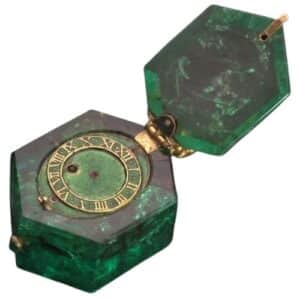Cheapside's Hidden Treasure
The location was not particularly notable or historically important before the find. It was similar to many, located at 30-32 Cheapside, London, England, nestled within Goldsmith’s Row where the center of gold and jewelry was located. The building is thought to have been the premise of a Jacobean goldsmith — Jacobean, as in the period in English history that coincides with the reign of King James I, who ruled from 1603 to 1625.
Goldsmith’s Row was destroyed in the Great Fire of London, which raged for four days in September of 1666, destroying medieval London. The buildings were reconstructed by the Goldsmiths’ Company in 1667, which had much to lose as they regulated the craft and trade of goldsmithing and silversmithing in London, dating back to 1327.
By 1912, however, London was experiencing significant growth and transformation, driven by the need to accommodate increasing commercial activity and improve infrastructure. Many cities, including London, underwent modernization to replace outdated structures with more modern buildings. There was a push to improve urban planning, including better roadways, utilities, and public services, which necessitated the redevelopment of older parts of the city — including Cheapside.
Cheapside had long been a commercial hub, and the redevelopment aimed to support the expansion of businesses and improve commercial spaces to meet contemporary needs.
The demolition work at 30-32 Cheapside, during this wave of urban renewal, inadvertently led to one of the most significant archaeological finds in London’s history.
Workers were digging in the basement of the building, which was set to be redeveloped, when they unearthed a wooden box filled with an astonishing collection of jewelry and precious items. The box had been concealed under the floorboards, likely hidden there for safekeeping in the mid-17th century, possibly during the turmoil of the English Civil War.
The Cheapside Hoard, as it’s called, provided a remarkable glimpse into the wealth and craftsmanship of the Elizabethan and early Stuart periods — the reign of Queen Elizabeth I, King James I, and his son, King Charles I.

One of the standout items within the hoard is an extraordinary emerald pocket watch. The watch’s case is carved from a rare and precious single large Colombian emerald. The interior mechanism is made of meticulously crafted brass, featuring intricate gold components and precise engineering, complete with a verge escapement mounted on a fusee — a conical-shaped, grooved pulley system used to equalize the uneven power delivery of the mainspring. This design ensured a consistent release of energy, crucial for maintaining accurate timekeeping. The balance wheel was adorned with fine engravings. The watch includes a pair of winding holes, one for the mainspring and one for the striking mechanism. The mainspring provides power, while the striking mechanism features a complex arrangement of gears and cams to control the chimes.
The pocket watch not only served as a functional timekeeping device but also as a statement of wealth and sophistication.
The finds were first exhibited to great acclaim at the London Museum in Kensington in 1914. Fast forward 100 years, the entire hoard was finally displayed together at the Museum of London from October 2013 to April 2014.
Currently, the hoard is not on public display, however, there are plans to create a purpose-built gallery for the permanent display at the museum’s new location in West Smithfield, which is scheduled to open in 2026. Until then, the hoard remains one of the Museum of London’s most treasured collections, occasionally featured in special exhibitions.

